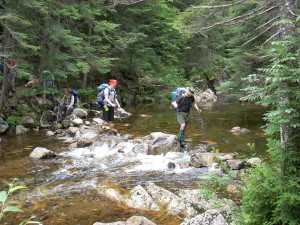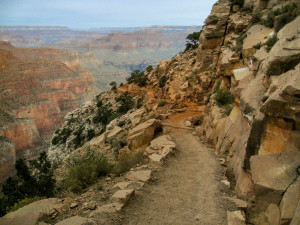Goode et al, in their 2015 publication “Looking beyond people, equipment, and environment: Is a systems theory model of accident causation required to understand injuries and near misses during outdoor activities?“, Procedia Manufacturing 3 (2015) 1125-1131 (available on-line at www.sciencedirect.com), relate the results of their investigation of the contributing factors to a number of outdoor incident reports from the New Zealand national incident database.

Among the 58 different types of causation of injuries and near misses determined to have existed (limited by the researchers to those associated with hiking activities from 2007-2011), the following are relevant to the planning and conduct of outdoor Scouting activities:
- parents fail to inform organizers of pre-existing injury
- lack of or poor risk management system
- lack of or poor staff training
- lack of or poor activity policies
- poor incident learning systems
- poor planning of the activity
- poor planning for participant abilities
- high participant to staff ratio
- failure to provide appropriate equipment
- failure to maintain activity area
- equipment serviceability
- poor communication with instructors
- participant unsafe acts
- participant failure to follow instructions
- participant attitude
- participant poor hazard awareness
- participant pre-existing condition
- participant judgment error
- participant physical fitness
- participant lack of skills/technique
- participant experience
- participant illness
- instructor inadequate supervision of participants
- lack of or poor instruction
- poor hazard awareness by instructor
- pre-existing condition of instructor
- instructor judgment error
- instructor failed to follow policies or protocol
- instructor lack of skills/technique
- instructor lack of training or experience
- instructor lack of planning
- lack of adequate supervision
- driver unsafe acts
- poor group communication
- lack of group teamwork
- poor group dynamics
- lack of equipment
- equipment failures
- adverse weather conditions
- temperature
- visibility
- animal or plant hazards
Quite a list indeed!
The vast majority of the causes of the incidents were reportedly due to factors relating to instructors, participants, activity supervisors, equipment, or the physical environment.

Interestingly, many of the above factors fall within various policy guidelines of BSA, such as the Sweet 16 of BSA Safety. In particular, qualified supervision, physical fitness, safe area or course, equipment selection, personal safety equipment, weather check, planning, communications, safety procedures and policies, skill level limits, and discipline are all aspects of the Sweet 16 of BSA Safety directly applicable to the above causes.
In addition, BSA’s Risk Zone safe driving reminders, and leader training such as Weather Hazards, Safe Swim Defense, Safety Afloat, Climb On Safely, Trek Safely, Swimming and Water Rescue, Paddle Craft Safety, and basic adult leader training are also all applicable to such causes.
And, of course, the Guide to Safe Scouting is a good place to start!
This discussion reinforces the need for a well-meaning adult Scouting volunteer to be as trained, experienced, and informed as possible, so that as many as possible of the above potential causes for an injury or near miss may be avoided.
